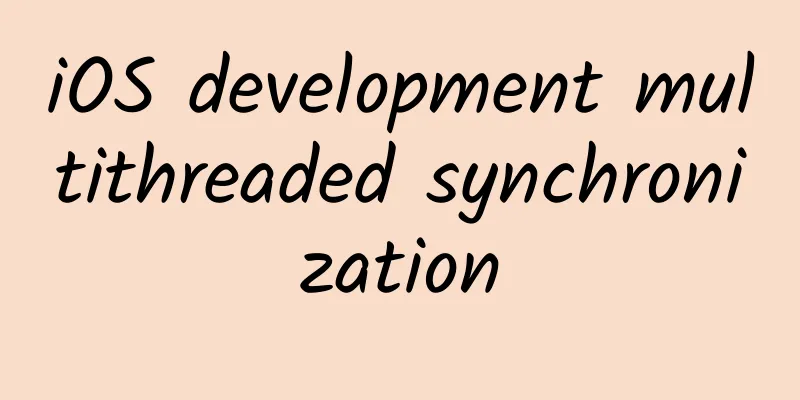iOS development multithreaded synchronization

|
Hi, today I want to talk to you about multi-thread synchronization in iOS development. When it comes to multi-thread synchronization, you may immediately think of various thread locks such as NSLock, NSCondtion, and even OSSpinLock. However, today we will not talk about thread locks. If you are interested in Lock, you can read this article. Since we are not talking about thread locks, what are we talking about? Of course, we are talking about multi-thread synchronization. Thread synchronization is not the same as thread lock. To solve the synchronization problem, we first need to understand why thread synchronization is needed. The main reason for thread asynchrony is that multiple threads may operate an object at the same time, resulting in inconsistent states. Can we understand it this way? If multiple threads do not access an object at the same time, the synchronization problem is solved. How to do this? You can use the idea of a serial queue. What is a serial queue? It can be simply understood that all operations must be executed in sequence. The main thread is a serial queue. The simplest way to synchronize is to put the synchronization operation on the main thread for execution. It doesn't matter. I didn't say it. Since it cannot be executed in the main thread, wouldn't it be OK to put it in a child thread? There are many ways to create a child thread, so I won't repeat them here. Those who are interested can show their skills. GCD synchronization GCD may be one of the simplest ways to create child threads. This article has a detailed introduction to GCD, so I will not describe it further. Since we want to achieve thread synchronization, we first need to create a serial queue.
Then, all synchronization events are added to the queue in sequence to ensure multi-thread synchronization
NSOperationQueue synchronization Most of the requirements can be met by GCD, but there are some special requirements, such as canceling the operation. In this case, NSOperationQueue will be a good choice. Although NSOperationQueue is a concurrent multi-thread pool, its clever design can also make it realize the function of a serial queue. When maxConcurrentOperationCount=1, only one NSOperation is executed at the same time, and NSOperationQueue changes from concurrent execution to serial execution.
The implementation method is the same as GCD. The serial execution of synchronous operations can be achieved by adding synchronous operations to the thread pool one by one.
HJSynchronizeDemo shows the actual usage in detail. Clever use of serial queues can bring unexpected results. In addition to solving multi-threaded synchronization, it can also handle serial large-scale computing services, such as image rendering, audio processing, etc. |
<<: Apple's multiple Internet services were interrupted for four hours last night
>>: iOS Development - Multithreaded Synchronization
Recommend
Bacteria test: How many bacteria are there on a mobile phone that is used for 8 hours a day?
The third wave of free total colony count testing...
E-commerce operation: a comprehensive review of promotional activities skills!
In this article, let’s take a look at the types o...
Ideal Auto: In August 2022, Ideal Auto delivered a total of 4,571 vehicles, two-thirds lower than its peak period
Ideal Auto released its sales results for August,...
How to provide early warning for user churn?
Recalling lost users is ineffective? The attritio...
Enjoy the spring, learn about this flower viewing guide
March is the season of spring, and the weather is...
“Leaves no marks”, “Safe mole removal”, is the Internet celebrity potion really so magical?
Many people have some moles on their bodies or fa...
Birthday wishes for African mercenaries, how much do mercenary wishes cost?
A group of videos that creatively express love an...
From "Music Review Special Train" to "Xigua Video Celebrity Ticket", what else can subway advertising do?
It’s been almost a year since the heart-wrenching...
As an operator, how do you understand user anxiety?
When operators take advantage of users’ anxiety, ...
Foreign server rental price list, overseas server rental
Foreign server rental price list, overseas server...
Understand the essence of information flow advertising strategy in one article!
Case description: The advertiser promoted the dow...
Online education: Which one has more opportunities, B2C or C2C?
Since 2014, Internet products in the field of onl...
How to quickly build an operating system for a new project?
I believe that many operators will encounter this...
How to verify V on TikTok? How to add contact information on the company homepage of Douyin Blue V account?
We often see a "Contact Information" la...
Marketing node reminder in May
April is coming to an end and May is approaching....









